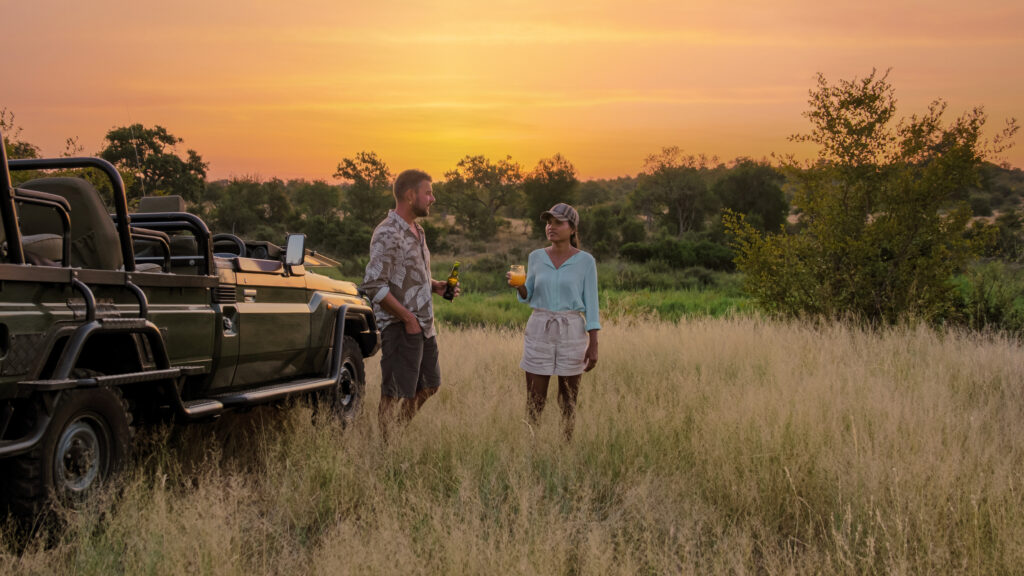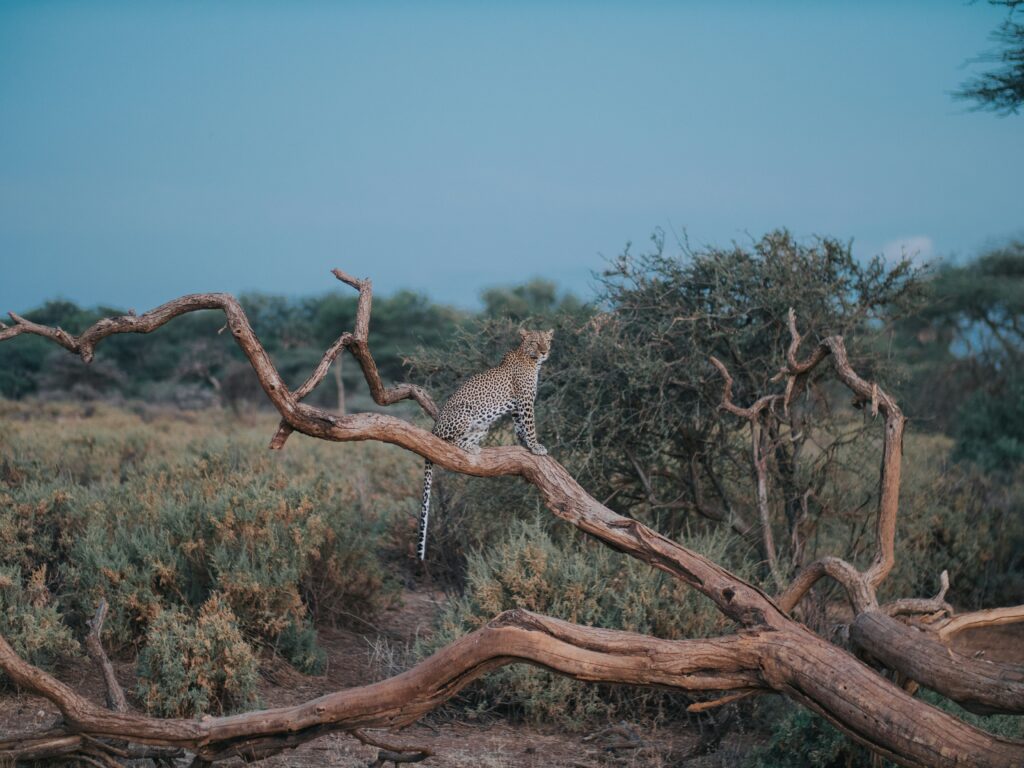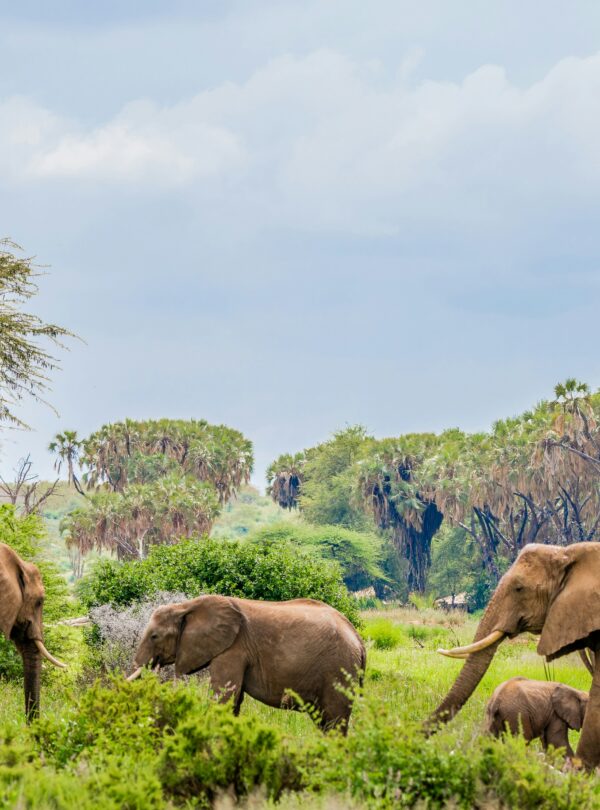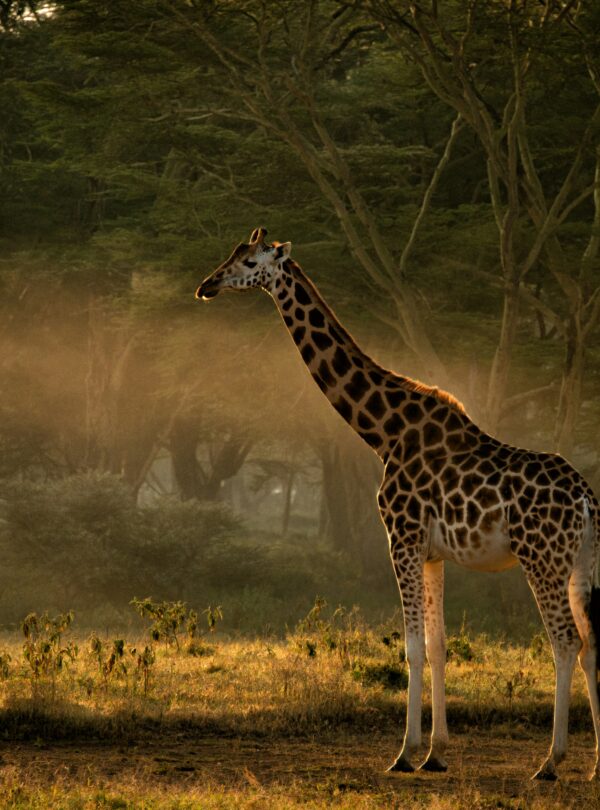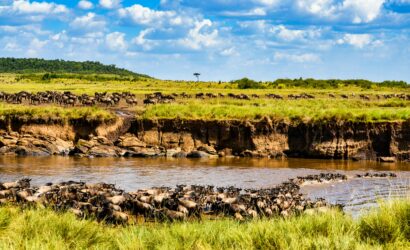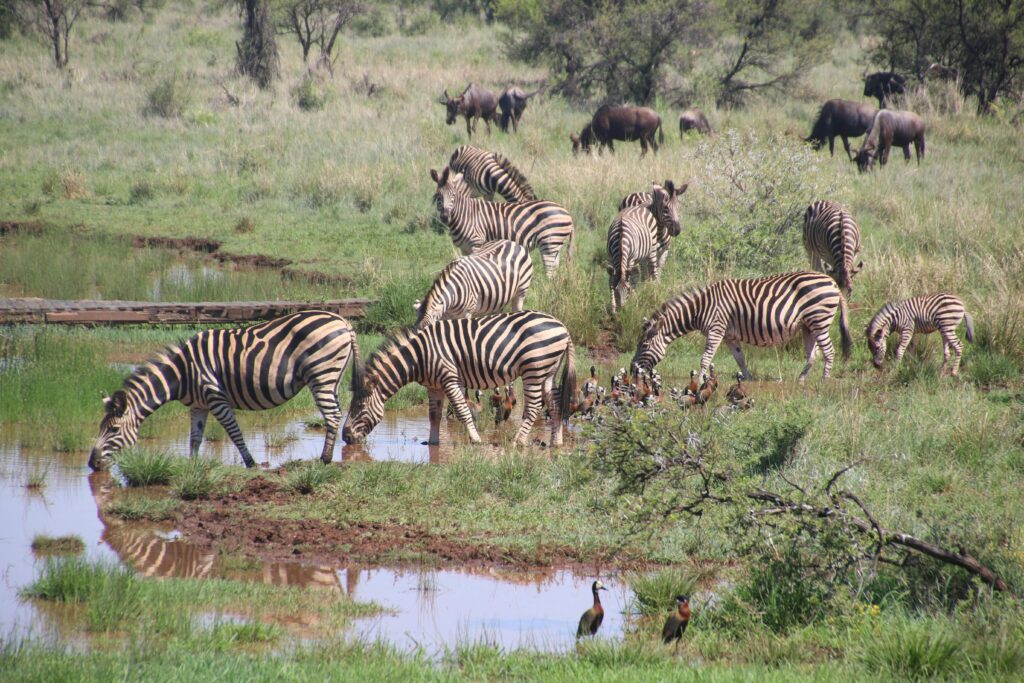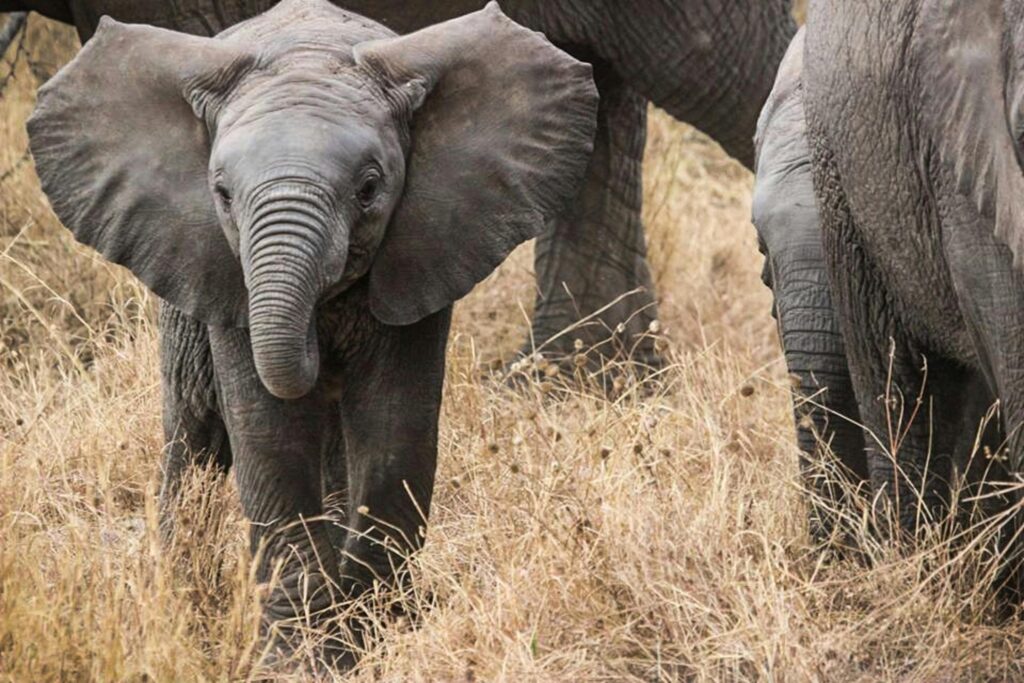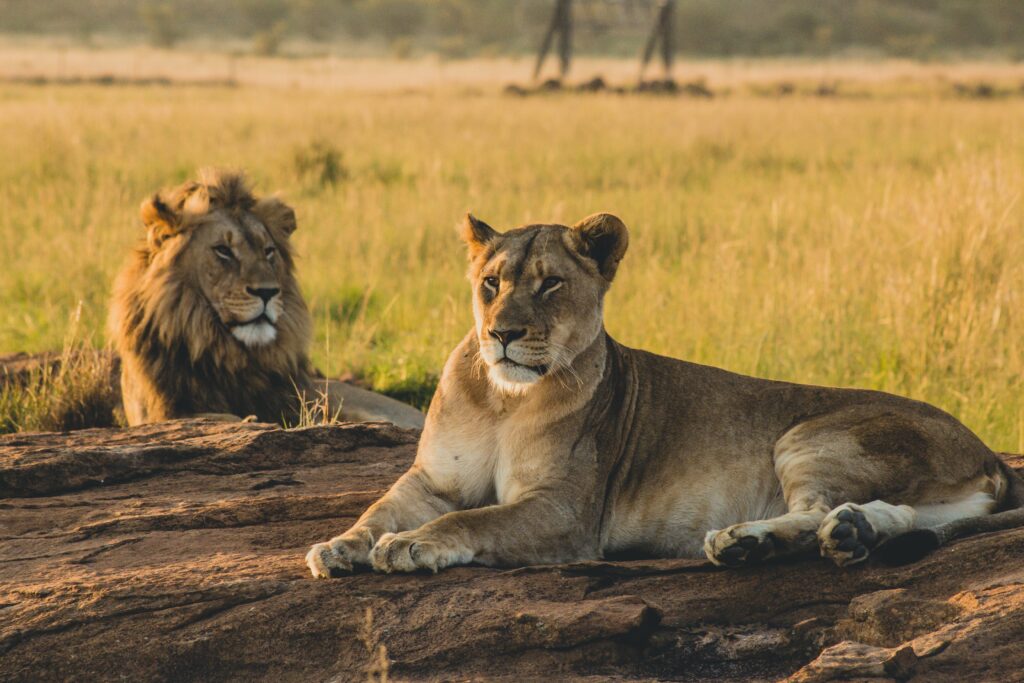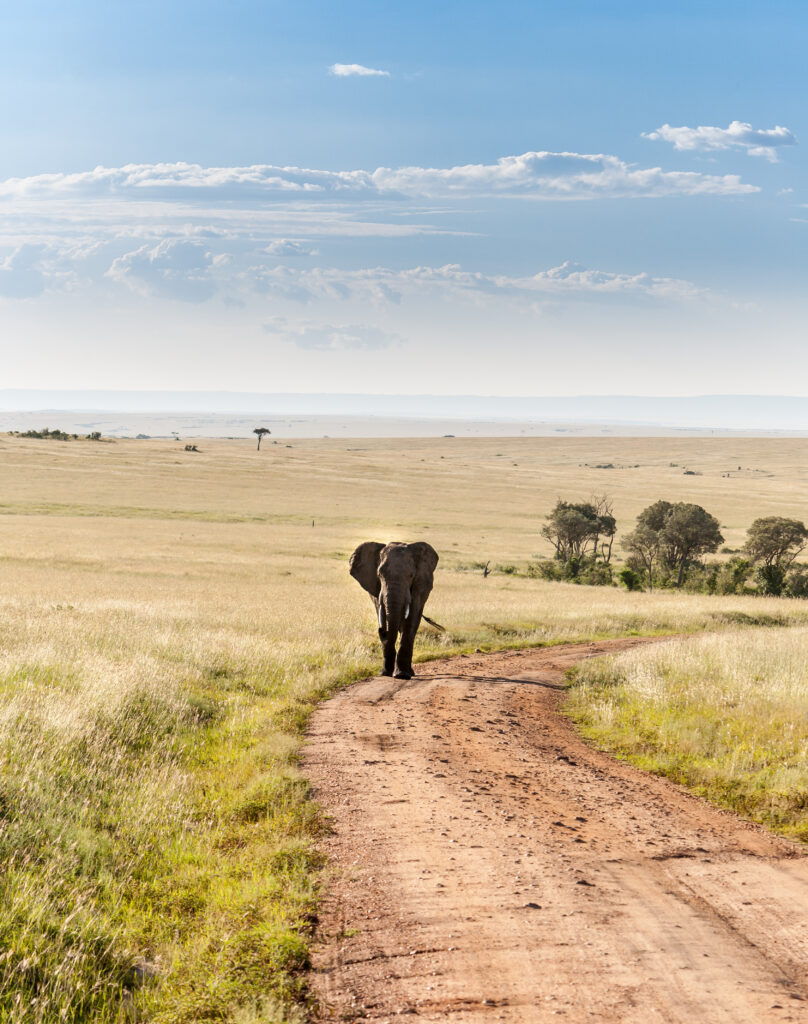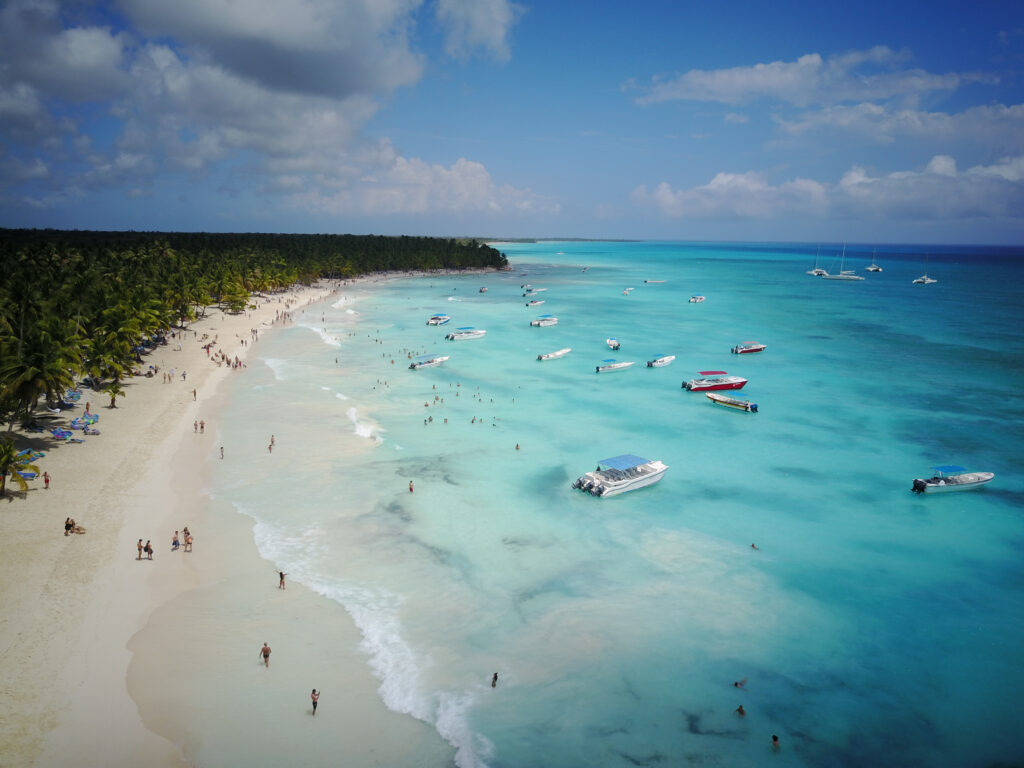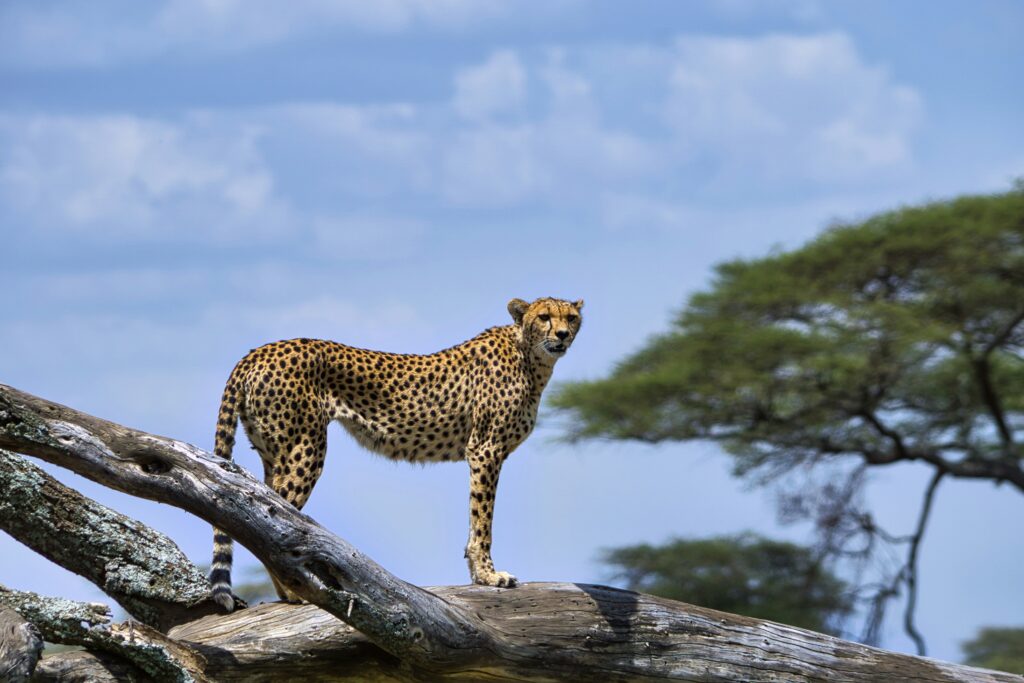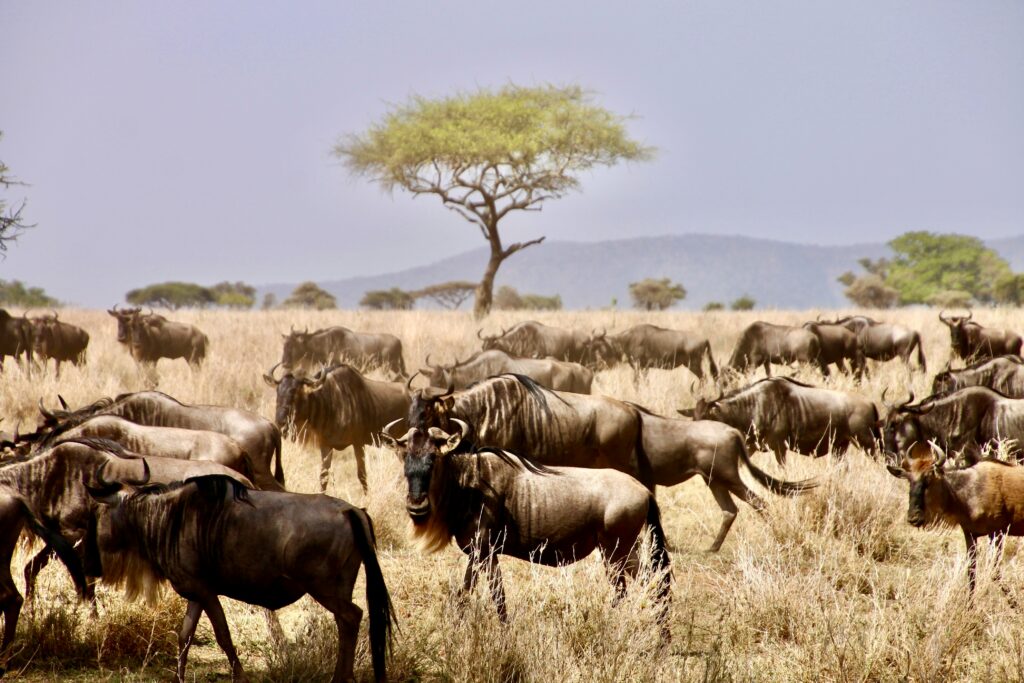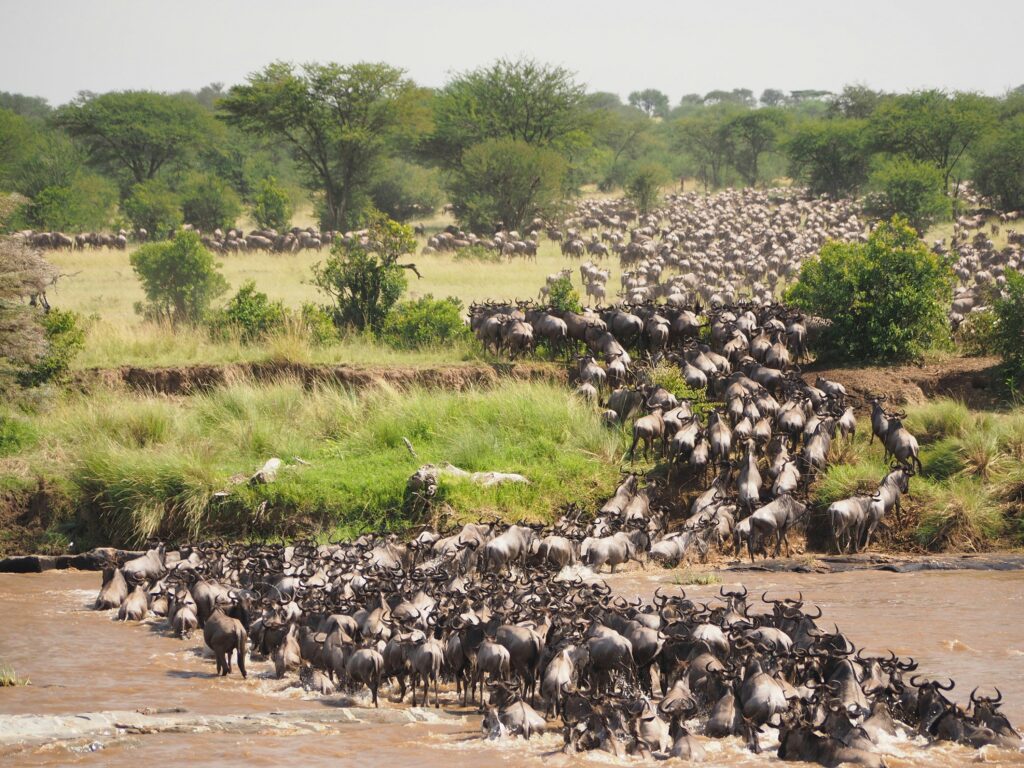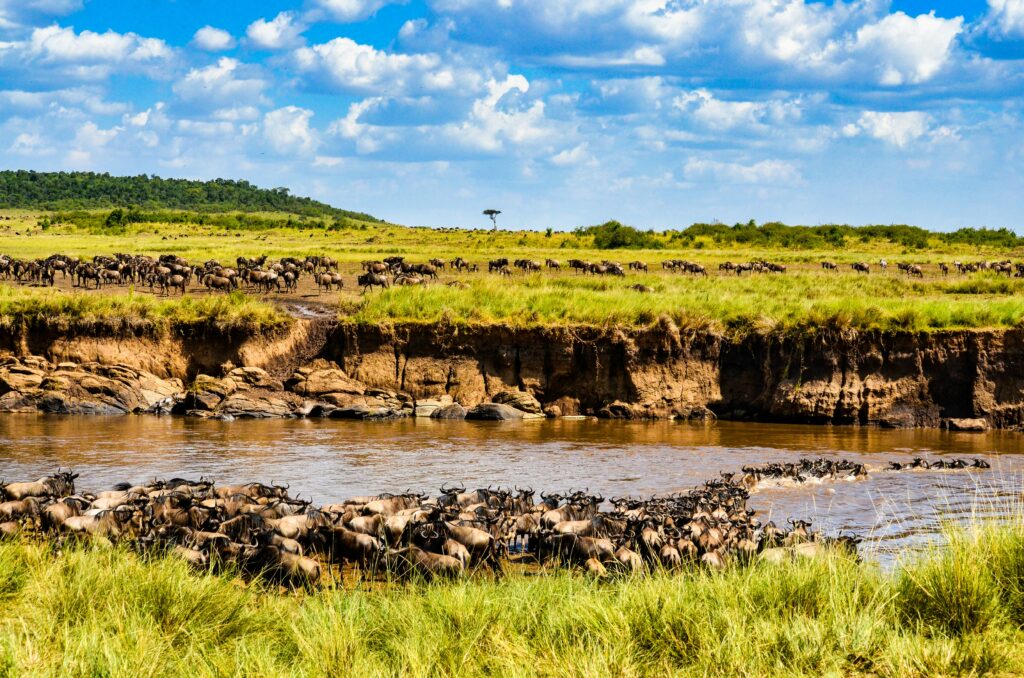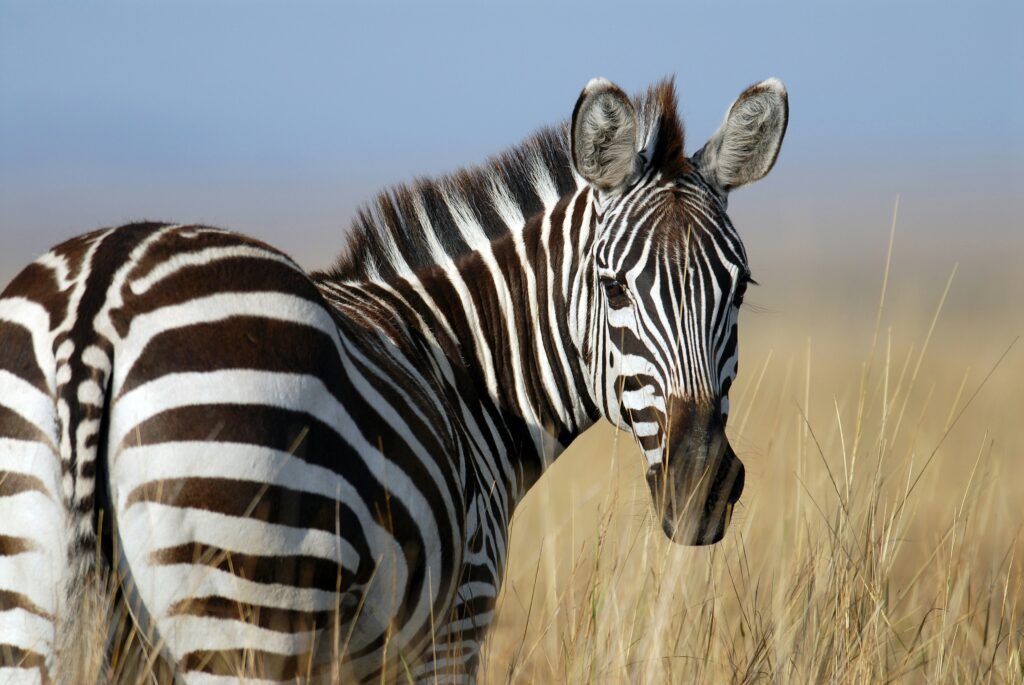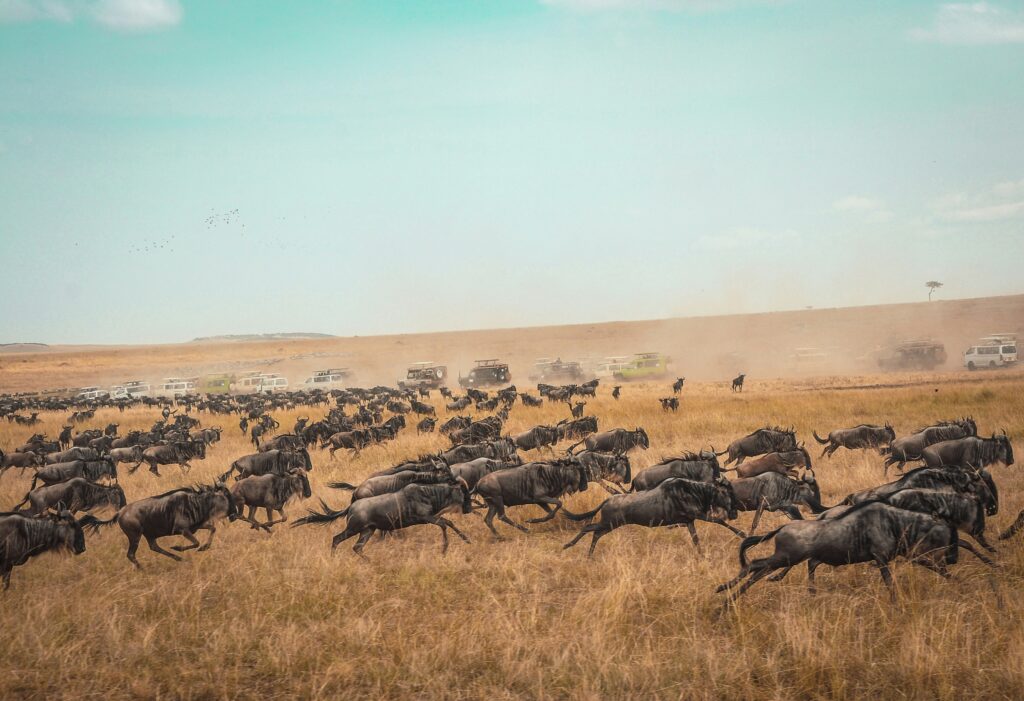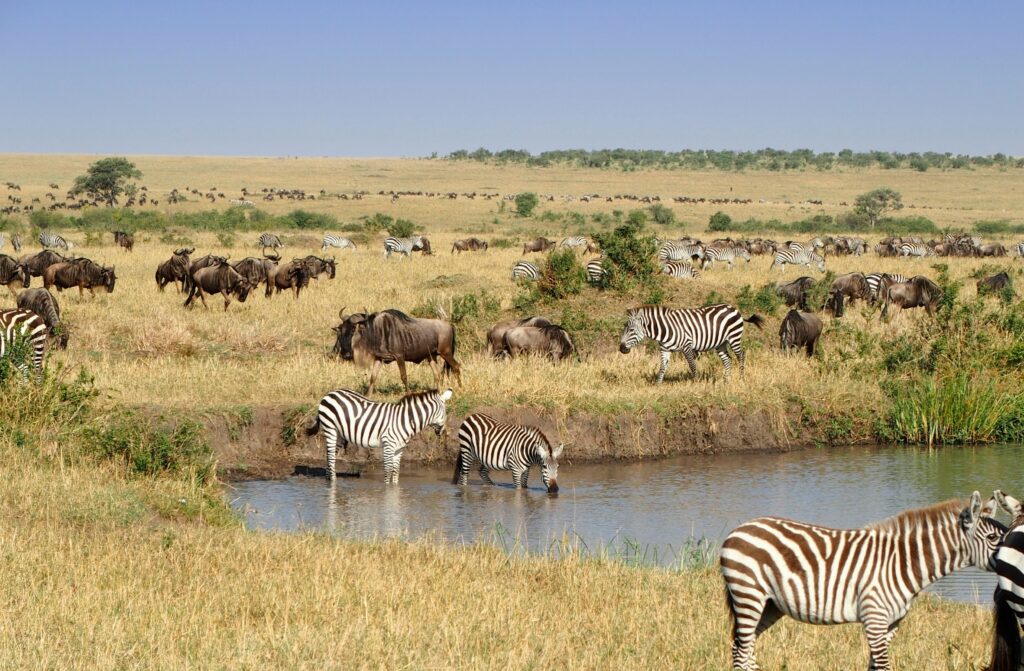Day 1: Arrival & The Samburu “Special Five
Morning: Scenic Transfer: Depart Nairobi (345km, 5–6hrs via A2 Highway) or opt for a 1hr flight to Samburu’s private airstrip.
Welcome & Check-In: Settle into your luxury camp (options: Samburu Intrepids Camp, Saruni Samburu, or Elephant Bedroom Camp), offering riverfront views and eco-conscious design.
Afternoon:
Game Drive: Track the Samburu Special Five—Grevy’s zebra (Africa’s most endangered zebra), reticulated giraffe (distinctive geometric patterns), Somali ostrich (blue-legged males), gerenuk (“giraffe-necked” antelope), and Beisa oryx (iconic spear-like horns). The Ewaso Nyiro River draws elephants (900+ herds) and predators like lions.
Sundowner: Sip cocktails at a riverside vantage point, watching crocodiles bask and buffaloes drink.
Evening:
Campfire Tales: Listen to stories about Kamunyak, the legendary lioness who “adopted” an oryx calf in 2002, a tale documented by BBC’s Heart of a Lioness.
Day 2: Predators, Birds & Starry Nights
Early Morning:
Dawn Game Drive: Seek out leopards and cheetahs prowling the golden savannah. Spot vulnerable species like the white-headed vulture and martial eagle.
Midday:
Birdwatching Safari: With 450+ bird species, focus on the Taita falcon (rare cliff-dweller) and yellow-billed oxpecker (a symbiotic cleaner). The riverbank attracts African darters and great egrets.
Afternoon:
Cultural Visit: Meet the Samburu people, semi-nomadic pastoralists, and learn about their beadwork, dances, and coexistence with wildlife.
Night:
Stargazing & Night Drive (if permitted): Spot nocturnal species like aardvarks or striped hyenas under Kenya’s unpolluted skies.
Day 3: Conservation & Departure
Morning:
Guided Nature Walk: Explore the arid landscape with a ranger. Discover the pancake tortoise (CITES critically endangered), which flattens itself into rock crevices to evade predators.
Wildlife Conservation Talk: Visit the Ewaso Lions Project, safeguarding big cats and mitigating human-wildlife conflict.
Midday: Farewell Lunch: Dine al fresco with views of the Ewaso Nyiro River.
Afternoon:
Transfer Back: Return to Nairobi via road or air, with a stop at the Equator Line (if driving) for a photo op.
Key Facts & Tips:
Climate: Arid zone with temps from 18°C (nights) to 40°C (days). Pack light layers, sunscreen, and binoculars.
Best Time: June–October (dry season) for dense wildlife along the river.
Unique Ecology: The reserve’s “Doum Palm” forests and lava outcrops host endemic species.
Sustainability: Camps like Saruni Samburu fund community-led anti-poaching units.
Exclusive Add-Ons: Hot-air balloon safaris, guided photography tours, or visits to neighboring Shaba Reserve.
Why Samburu?
Samburu isn’t just a safari—it’s a journey into Kenya’s untamed north, where rare species thrive and ancient cultures endure.

